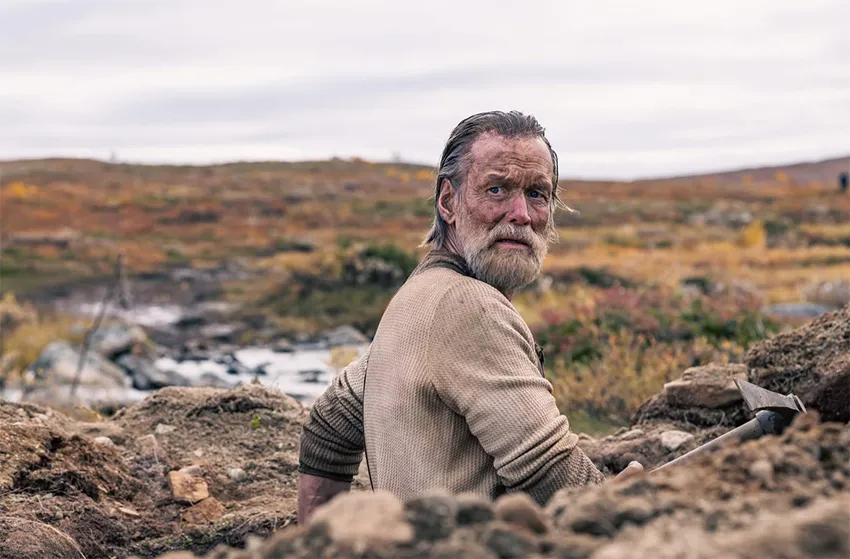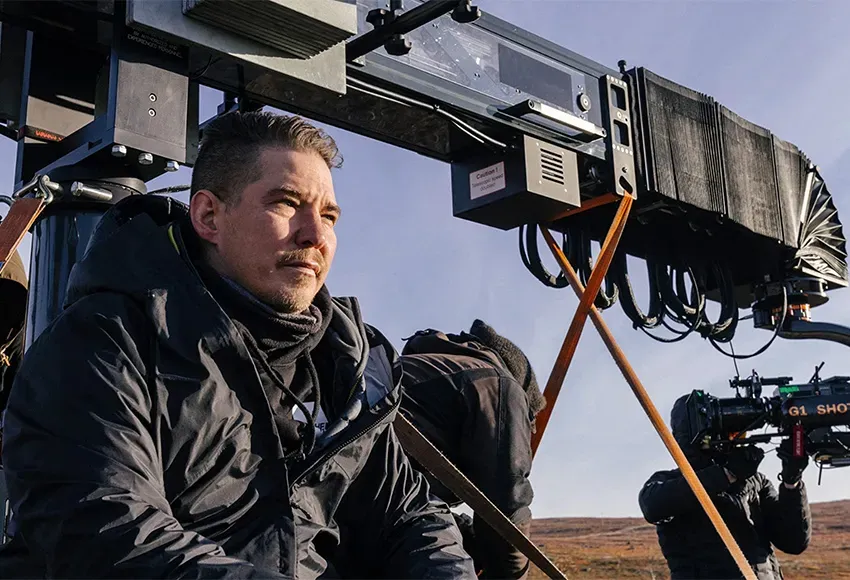Rare Exports and Big Game filmmaker Jalmari Helander returns with the explosively entertaining Sisu, a film that almost assuredly will go down as one of 2023's best, hard-R action extravaganzas.
It's the story of grizzled Finnish prospector Aatami Korpi (Jorma Tommila) at the tail end of WWII. The Germans are in retreat, and he's uncovered a cache of gold deep in the heart of Lapland. On the long trek back to civilization, Aatami unluckily encounters a Nazi battalion led by the bloodthirsty Bruno (Aksel Hennie), and all kinds of hell breaks loose.
But Aatami is not the downtrodden old man he initially appears to be, and Bruno is not above murdering civilians – and his own men – to get his hands on the prospector's gold. It's a battle of wits, wills, and superhuman strength, as the German commander throws all the mechanized might of his small army against a lone individual brandishing only a razor-sharp pickaxe and a singular determination to survive.
It's rather magnificent, with Herlander unleashing a series of crazy action sequences overflowing in gruesome carnage. The film plays like an inspired combination of First Blood, The Treasure of the Sierra Madre, and Mad Max all stirred together to become a singularly tasty cinematic stew of violence and gore. I couldn't help but love it.
I sat down with Herlander to chat about Sisu. Here are the edited transcripts of what he had to say:
Sara Michelle Fetters: What was the inspiration for Sisu? Where did the idea come from?
Jalmari Helander: First Blood. The idea came in two stages, in a way. First was the idea of a man finding a lot of gold in Lapland and getting in some kind of trouble. But I never figured out what the trouble would be until, many years later, I was thinking about Nazis who were destroying basically the whole of Lapland. It all clicked. I knew exactly what I was going to do.
SMF: I watched the film twice, and the second time, I watched it without sound. You utilize a lot of silent film language. I was gobsmacked by how well it played, even without all of that terrific sound design and music and dialogue from the supporting characters. Was that by design? Did you think of Sisu as a silent action film?
JH: Yes, it was there from the beginning. I've been saying, it's been like a big learning experience for me when I started to write the film and not having dialogue, because it's a totally different ballgame of writing. You have to solve the problems with pictures, not explaining them with the boring or stupid dialogue.
When I had all the homework done with the script, it actually was so easy to shoot. It felt almost like it should always be like this, because it's so much harder to go on the set with the actors to have a big dialogue scene. Those are hard to make. But when you don't have it, it's so nice to shoot. I don't know, it's hard to explain, but it feels like it should be like that always.

SMF: The film also feels like a love letter to Jorma. You've worked with him so many times, and yet this film feels like you're honoring him and showcasing him in ways that we haven't seen before. What did Jorma think when you presented him with this character?
JH: He was really glad about the whole idea, but his second thought probably was like, "This is a fucking lot to do. I'm over 60 years old. Am I physically in the condition to even pull this off?" [laughs]
He knew what the shooting [was] going to be like. It was not going to be easy. You're going to be in weird places every day doing some weird things. It's hard work. But, while you're doing it, you need to look fucking incredible and show all your emotions and decisions and what you think with just with your face and eyes and arms. It was going to be very physical.
But I knew he could handle it.
SMF: I love that you bring up the emotion. I was taken aback by how emotional the film is. There's this scene – and I don't want to ruin it for people – near the end, where Aatami climbs on a truck and is faced with something incredible. There's this glance that passes between everyone in the back of this truck, and I surprisingly found myself tearing up a little. How do you create this emotional connection to a character who doesn't say anything and conveys everything through his physicality and his eyes?
JH: I think Jorma is that kind of actor that he makes me look like a better director than I actually am. I remember being behind the monitor when Jorma's playing the scene where he finds the gold, and I immediately understood that now we were doing something cool. I was basically crying, because it was so emotional to see it. I have of course imagined that thing for a very long time, and when I actually saw it and how much better it was than what I was thinking, "Wow. That's Jorma."
SMF: Your films are very outlandish. They're over the top. Yet there is a personal touch to all of them, and they all are about relationships. They're all about making human connections. How do you balance all of this surrealism, this hyperrealism, and yet still manage to convey an emotional connection that's authentic, something that people can relate to no matter where they are in the world?
JH: I honestly do not know. If we are talking about Sisu, I never fooled around with the character of Aatami. There's nothing comical about him. Aatami is portrayed as seriously as possible. Everything he does is serious. You could even say that he's from a different movie than what's happening sometimes.
But at the same time, I wanted to have some fun with the accent, with the feel, because I didn't want this film to be like a The Revenant. Kind of a really serious, hard-ass film. I wanted this to have an entertaining side, a silly side. So I do think the combination is there, but that's my way of doing it.
SMF: The other thing that you're very good at is orchestrating the visual language of a film. You construct all of these incredible set pieces, and yet I never felt like they were overcut or that I wasn't able to understand what was happening at any given moment. How do you and your creative team make those decisions and ensure that the film doesn't become a discombobulated mess no matter how extreme the action gets?
JH: I like to be clear with what I'm doing. I need to know when I'm behind the monitor to understand that, okay, this guy is here, these guys are over there, and that I'm going to show everything very clearly. What is the setup? Then I break it down. It's one step at a time.
You need to first to understand what everybody wants and where they are. You can't make it up on the day. It all has to make visual sense. It cannot be messy. It's hard to explain, but I like to be very clear when setting things up.
SMF: One last question. What do you want audiences to take away from the film? What do you hope they're talking about as they exit the theater?
JH: I hope they're talking about to their friends that how fucking cool this movie was! [laughs]


